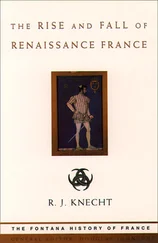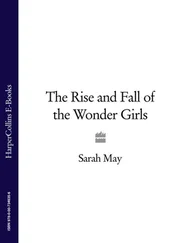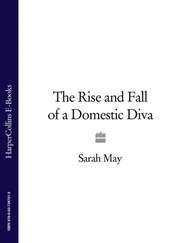The benefits accruing from the expansion of Europe were widespread and permanent, and – most important of all – they helped to accelerate an already-existing dynamic. The emphasis upon the acquisition of gold, silver, precious metals, and spices, important though such valuables were, ought not to obscure the worth of the less glamorous items which flooded into Europe’s ports once its sailors had breached the oceanic frontier. Access to the Newfoundland fisheries brought an apparently inexhaustible supply of food, and the Atlantic Ocean also provided the whale oil and seal oil vital for illumination, lubrication, and many other purposes. Sugar, indigo, tobacco, rice, furs, timber, and new plants like the potato and maize were all to boost the total wealth and well-being of the continent; later on, of course, there was to come the flow of grain and meats and cotton. But one does not need to anticipate the cosmopolitan world economy of the later nineteenth century to understand that the Portuguese and Spanish discoveries were, within decades, of great and ever-growing importance in enhancing the prosperity and power of the western portions of the continent. Bulk trades like the fisheries employed a large number of hands, both in catching and in distribution, which further boosted the market economy. And all of this gave the greatest stimulus to the European shipbuilding industry, attracting around the ports of London, Bristol, Antwerp, Amsterdam, and many others a vast array of craftsmen, suppliers, dealers, insurers. The net effect was to give to a considerable proportion of western Europe’s population – and not just to the elite few – an abiding material interest in the fruits of overseas trade.
When one adds to this list of commodities the commerce which attended the landward expansion of Russia – the furs, hides, wood, hemp, salt, and grain which came from there to western Europe – then scholars have some cause in describing this as the beginning of a ‘modern world system’. 32 What had started as a number of separate expansions was steadily turning into an interlocking whole: the gold of the Guinea coast and the silver of Peru were used by the Portuguese, Spaniards, and Italians to pay for spices and silks from the Orient; the firs and timber of Russia helped in the purchase of iron guns from England; grain from the Baltic passed through Amsterdam on its way to the Mediterranean. All this generated a continual interaction – of further European expansion, bringing fresh discoveries and thus trade opportunities, resulting in additional gains, which stimulated still more expansion. This was not necessarily a smooth upward progression: a great war in Europe or civil unrest could sharply reduce activities overseas. But the colonizing powers rarely if ever gave up their acquisitions, and within a short while a fresh wave of expansion and exploration would begin. After all, if the established imperial nations did not exploit their positions, others were willing to do it instead.
This, finally, was the greatest reason why the dynamic continued to operate as it did: the manifold rivalries of the European states, already acute, were spilling over into transoceanic spheres. Try as they might, Spain and Portugal simply could not keep their papally assigned monopoly of the outside world to themselves, the more especially when men realized that there was no northeast or northwest passage from Europe to Cathay. Already by the 1560s, Dutch, French, and English vessels were venturing across the Atlantic, and a little later into the Indian and Pacific oceans – a process quickened by the decline of the English cloth trade and the Revolt of the Netherlands. With royal and aristocratic patrons, with funding from the great merchants of Amsterdam and London, and with all the religious and nationalist zeal which the Reformation and Counter-Reformation had produced, new trading and plundering expeditions set out from northwest Europe to secure a share of the spoils. There was the prospect of gaining glory and riches, of striking at a rival and boosting the resources of one’s own country, and of converting new souls to the one true faith; what possible counterarguments could hold out against the launching of such ventures? 33
The fairer aspect of this increasing commercial and colonial rivalry was the parallel upward spiral in knowledge – in science and technology. 34 No doubt many of the advances of this time were spinoffs from the arms race and the scramble for overseas trade; but the eventual benefits transcended their inglorious origins. Improved cartography, navigational tables, new instruments like the telescope, barometer, backstaff, and gimballed compass, and better methods of shipbuilding helped to make maritime travel a less unpredictable form of travel. New crops and plants not only brought better nutrition but also were a stimulus to botany and agricultural science. Metallurgical skills, and indeed the whole iron industry, made rapid progress; deep-mining techniques did the same. Astronomy, medicine, physics, and engineering also benefited from the quickening economic pace and the enhanced value of science. The inquiring, rationalist mind was observing more, and experimenting more; and the printing presses, apart from producing vernacular Bibles and political treatises, were spreading these findings. The cumulative effect of this explosion of knowledge was to buttress Europe’s technological – and therefore military – superiority still further. Even the powerful Ottomans, or at least their front-line soldiers and sailors, were feeling some of the consequences of this by the end of the sixteenth century. On other, less active societies, the effects were to be far more serious. Whether or not certain states in Asia would have taken off into a self-driven commercial and industrial revolution had they been left undisturbed seems open to considerable doubt; 35 but what was clear was that it was going to be extremely difficult for other societies to ascend the ladder of world power when the more advanced European states occupied all the top rungs.
This difficulty would be compounded, it seems fair to argue, because moving up that ladder would have involved not merely the acquisition of European equipment or even of European techniques: it would also have implied a wholesale borrowing of those general features which distinguished the societies of the West from all the others. It would have meant the existence of a market economy, if not to the extent proposed by Adam Smith then at least to the extent that merchants and entrepreneurs would not be consistently deterred, obstructed, and preyed upon. It would also have meant the existence of a plurality of power centres, each if possible with its own economic base, so that there was no prospect of the imposed centralization of a despotic oriental-style regime – and every prospect of the progressive, if turbulent and occasionally brutal, stimulus of competition. By extension, this lack of economic and political rigidity would imply a similar lack of cultural and ideological orthodoxy – that is, a freedom to inquire, to dispute, to experiment, a belief in the possibilities of improvement, a concern for the practical rather than the abstract, a rationalism which defied mandarin codes, religious dogma, and traditional folklore. 36 In most cases, what was involved was not so much positive elements, but rather the reduction in the number of hindrances which checked economic growth and political diversity. Europe’s greatest advantage was that it had fewer dis advantages than the other civilizations.
Although it is impossible to prove it, one suspects that these various general features related to one another, by some inner logic as it were, and that all were necessary. It was a combination of economic laissez-faire, political and military pluralism, and intellectual liberty – however rudimentary each factor was compared with later ages – which had been in constant interaction to produce the ‘European miracle’. Since the miracle was historically unique, it seems plausible to assume that only a replication of all its component parts could have produced a similar result elsewhere. Because that mix of critical ingredients did not exist in Ming China, or in the Muslim empires of the Middle East and Asia, or in any other of the societies examined above, they appeared to stand still while Europe advanced to the centre of the world stage.
Читать дальше












